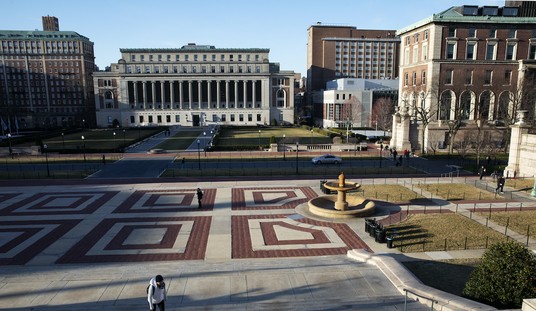Another month, another mixed bag from the Bureau of Labor Statistics. TheUS economy added 252,000 jobs in December and the jobless rate dropped two-tenths of a point to 5.6%, but the workforce participation rate dropped by the same amount to return to a 36-year low. The household data only shows half of the job gains that the establishment survey shows as well:
Total nonfarm payroll employment rose by 252,000 in December, and the unemployment rate declined to 5.6 percent, the U.S. Bureau of Labor Statistics reported today. Job gains occurred in professional and business services, construction, food services and drinking places, health care, and manufacturing.
The unemployment rate declined by 0.2 percentage point to 5.6 percent in December, and the number of unemployed persons declined by 383,000 to 8.7 million. Over the year, the unemployment rate and the number of unemployed persons were down by 1.1 percentage points and 1.7 million, respectively. …
The civilian labor force participation rate edged down by 0.2 percentage point to 62.7 percent in December. Since April, the participation rate has remained within a narrow range of 62.7 to 62.9 percent. In December, the employment-population ratio was 59.2 percent for the third consecutive month. However, the employment-population ratio is up by 0.6 percentage point over the year.
BLS also applied upward revisions to the previous two months that increased overall job growth by 50,000. That brings the BLS estimate of job growth in the fourth quarter to 866,000. However, when looking at the Household survey, the number of overall employed only rose 111,000 in December. Still, even in Table B the growth in the fourth quarter was 835K overall, thanks to a jump of more than 600K in October.
The topline jobless rate of 5.6% is the best we’ve seen since June 2008. The U-6 rate (which is an unemployment rate that takes into account more of the population) also dropped two-tenths of a point to 11.2%, the lowest since October 2008, at the height of the financial panic. In June 2008 it was still only at 10.1%, which demonstrates the looser connection U-3 still has to the economic reality of chronic unemployment. However, the 62.7% participation rate returns us to our 36-year low, and comes from 450,000 workers leaving the workforce in December (273K in the Household data, still more than jobs added). The jobless rate drop is mainly an illusion.
Interestingly, though, wages declined slightly in December, which one would not associate with a robust jobs market, and hours declined slightly in manufacturing:
The average workweek for all employees on private nonfarm payrolls was unchanged at 34.6 hours in December. The manufacturing workweek edged down by 0.1 hour to 41.0 hours, and factory overtime edged up by 0.1 hour to 3.6 hours. The average workweek for production and nonsupervisory employees on private nonfarm payrolls edged up by 0.1 hour to 33.9 hours.
In December, average hourly earnings for all employees on private nonfarm payrolls decreased by 5 cents to $24.57, following an increase of 6 cents in November. Over the year, average hourly earnings have risen by 1.7 percent. In December, average hourly earnings of private-sector production and nonsupervisory employees decreased by 6 cents to $20.68.
That’s a bit of a puzzle, and not a good one. Either the competition for jobs is still far too sharp to push wages up, or businesses are having to compensate for higher costs by delaying compensation increases. According to the Household data, the US economy added an average of 231,000 jobs in 2014, well above the level needed to keep up with population growth but not exactly sufficient to make significant inroads into the ranks of the chronically unemployed. Those idled workers may be suppressing wage growth and making it difficult for workers to turn the market to their advantage. We will need higher levels of job creation to overcome that handicap, and so far we still are waiting for the real expansion in jobs to begin.
The AP considers today’s report a success, but not enough of one:
The Labor Department said Friday that employers added 252,000 jobs last month and 50,000 more in October and November combined than it had previously estimated. The unemployment rate dropped to 5.6 percent from 5.8 percent in November. The rate is at its lowest point since 2008.
Yet wage growth remains weak. Average hourly pay slipped 5 cents in December. And the unemployment rate fell partly because many of the jobless gave up looking for work and so were no longer counted as unemployed. …
The improving jobs picture has healed some of the deep scars left by the Great Recession. The number of people who have been unemployed for more than six months fell 27 percent last year. And the number working part time who would prefer full-time work dropped 12 percent.
Still, much healing remains to be done. To keep up with population growth since the recession began, the economy would need to create 4.9 million additional jobs, according to the Brookings Institution. Average hourly pay is barely staying ahead of inflation.
That’s 4.9 million jobs above those needed to keep up with future population growth, roughly 150,000 a month. At the rate we added jobs in 2014, it would take us another five years to accomplish that feat — and we’re already almost six years into the recovery. Five years into the Reagan recovery, the economy had not only put all the sidelined workers back on the job but created a massive expansion of the workforce. The fact that we’re still seeing shrinkage in today’s workforce is a measure of how weak this recovery has been, and how much the Obama administration’s economic policies have hampered it.








Join the conversation as a VIP Member